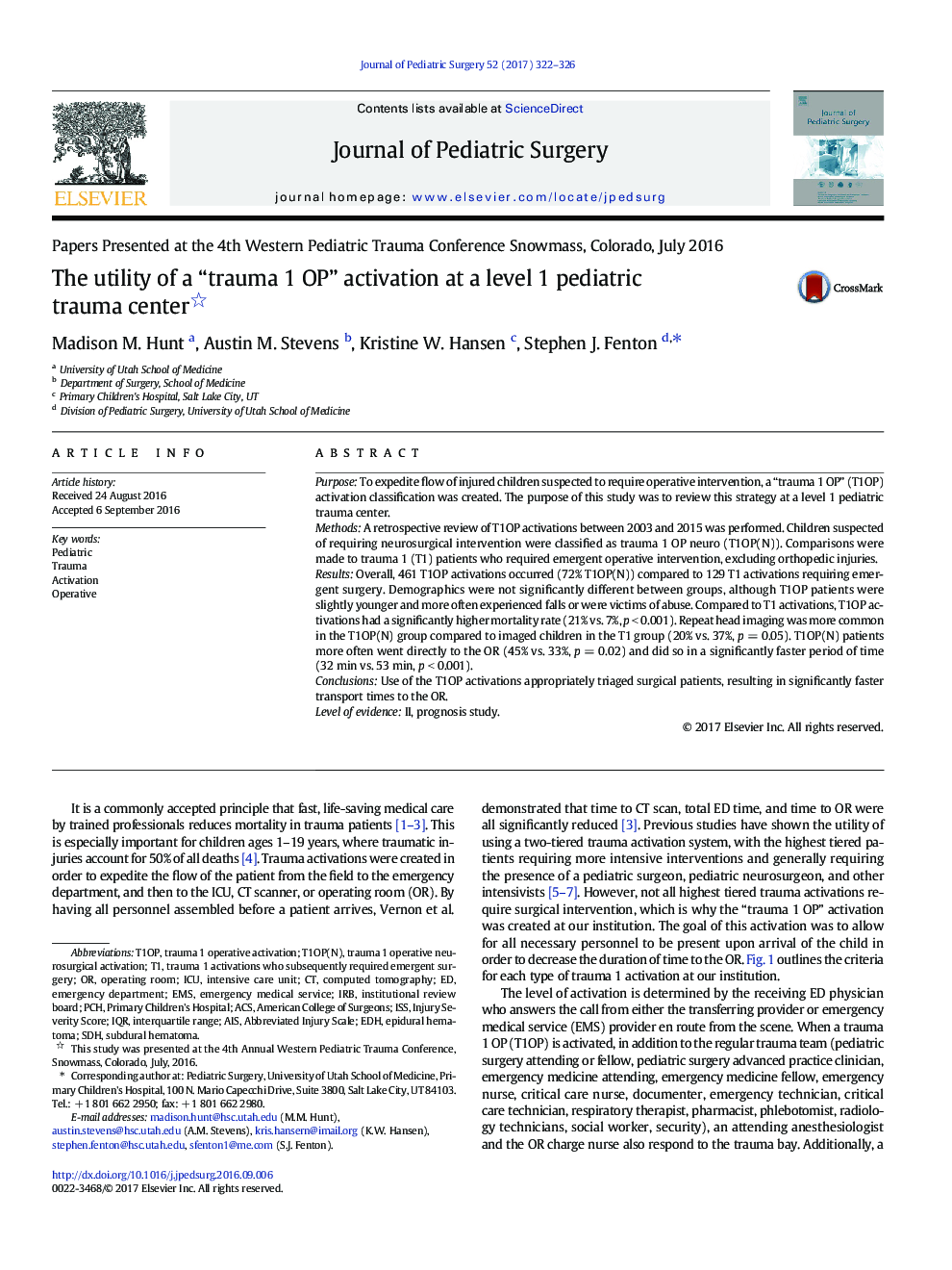| Article ID | Journal | Published Year | Pages | File Type |
|---|---|---|---|---|
| 5718425 | Journal of Pediatric Surgery | 2017 | 5 Pages |
PurposeTo expedite flow of injured children suspected to require operative intervention, a “trauma 1 OP” (T1OP) activation classification was created. The purpose of this study was to review this strategy at a level 1 pediatric trauma center.MethodsA retrospective review of T1OP activations between 2003 and 2015 was performed. Children suspected of requiring neurosurgical intervention were classified as trauma 1 OP neuro (T1OP(N)). Comparisons were made to trauma 1 (T1) patients who required emergent operative intervention, excluding orthopedic injuries.ResultsOverall, 461 T1OP activations occurred (72% T1OP(N)) compared to 129 T1 activations requiring emergent surgery. Demographics were not significantly different between groups, although T1OP patients were slightly younger and more often experienced falls or were victims of abuse. Compared to T1 activations, T1OP activations had a significantly higher mortality rate (21% vs. 7%, p < 0.001). Repeat head imaging was more common in the T1OP(N) group compared to imaged children in the T1 group (20% vs. 37%, p = 0.05). T1OP(N) patients more often went directly to the OR (45% vs. 33%, p = 0.02) and did so in a significantly faster period of time (32 min vs. 53 min, p < 0.001).ConclusionsUse of the T1OP activations appropriately triaged surgical patients, resulting in significantly faster transport times to the OR.Level of evidenceII, prognosis study.
